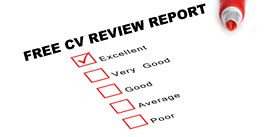How to Write a Covering Letter
The rise in online communications has changed the way we apply for jobs. The biggest difference is the speed with which employers and recruiters can post an advert or listing, for that to be read by thousands of potential candidates, and for those candidates to apply. It can literally happen in the space of a single working day.
While this speed brings real convenience when seeking and applying for jobs, it also brings some pitfalls that you need to avoid if your job hunt is to be successful. In this how to write a covering letter guide, you will discover how to overcome these pitfalls.
One of the biggest mistakes that people make with online applications is failing to write a covering letter. Commonly, this means that candidates send an email with their CV attached and write only the briefest message in the email body, with maybe a couple of words in the subject line - this is not a proper covering letter!
The same candidates, when uploading their CV to a jobs' database or careers' website, fail to write more than a single sentence in the box entitled 'Covering Letter' or 'Additional Information'. In doing so, they are missing a great opportunity to stand out from the crowd and get their CV looked at.
Why Write an Online Covering Letter?
Websites and email programs have brought speed to our written communications as well as brevity - most of what we write is extremely short and sometimes does not even add up to an entire sentence.
If you email your application and fail to write a covering letter in the email body, then your email may be so anonymous that the busy employer deletes it without evening opening it.
You really do need to learn how to write a covering letter, remember an employer may receive 100s of emails, especially if they have advertised on major job sites, and will reserve their attention solely for those that create an immediate connection.
Alternatively, they may use the email messages alone to filter the numbers down to a more manageable number (although larger organisations may use keyword search software).
Printed applications will at least get opened and quickly scanned before being put in either the pile for closer scrutiny or discarded. With an online application, you need to persuade the employer or recruiter to look at your application.
The covering letter needs to introduce you, highlighting why you are a suitable candidate by making the important connection between your CV and the advertised vacancy. It should draw attention to your major selling points - i.e. your work history, skills, strengths and aptitudes. Your covering letter should not duplicate your CV, but should entice the employer to read further by catching their interest.
The covering letter is where you can convey a greater sense of yourself as a professional, adding colour and personality to your application. It is the first step in establishing a rapport with an employer, who will hopefully read it and decide that they want to know more about you.
Importantly, a covering letter must also demonstrates that you are business-like and can communicate effectively. The employer will hopefully assume that you are just as professional face-to-face - it is up to you to create this expectation.
Need a first-class CV and covering letter? A CV writer from Bradley CVs can expertly produce both a CV and covering letter for you that will make an employer want to interview you for the job they are trying to fill.
How to Format Your Covering Letter
There are limitations imposed by the email format, however, which mean you cannot simply copy your printed covering letter. Emails are generally shorter and people tend not to read lengthy letters through to the end.
Therefore, your email covering letter needs to be more condensed, with around three short paragraphs totalling 180-200 words, all preferably visible without scrolling. You also have a subject line to use, which serves as your introduction to your covering letter - this is another layer of communication altogether when compared with the printed letter.
Next, you have few options with formatting, so are more restricted and it is best to stick with common fonts, such as Times Roman or Arial, and a font size of 11pt or 12pt. Formatting may be lost upon delivery.
Finally, a major consideration: the employer or recruiter may use scanning software to conduct a search for keywords in order to narrow down the field of candidates. We look at this more in the next section of how to write a covering letter.
Research and Evaluation for Your Covering Letter
What are your strengths and attributes as an employee? These really need emphasising in your covering letter. We assume that when identifying your career goals, you evaluated your own abilities, skills, experience and attributes. If you have not done so already, then do this before you read the rest of this guide on how to write a covering letter.
What kind of job are you looking for? Make a list of the key experience areas, skills and knowledge that employers are looking for in this role. Now compare this with your self-evaluation list. You must prioritise the items on your own list in line with what matters most to the employer. These attributes are what you need to highlight in your letter.
Also, look through job advertisements to see what is important in this role and industry - you can also use this opportunity to collect industry buzzwords and keywords. Many recruiters or large employers will use scanning software to filter hundreds of emails down to a smaller number that match their search criteria.
You should ensure that your covering letter, although short, includes keywords from the job advertisement, along with industry buzzwords and commonly used phrases for relevant skills, strengths and experience.
If applying for a specific vacancy, write down what most attracts you about the job. You can really convey motivation and commitment via the covering letter, to a far greater degree than in your CV.
How to Write a Covering Letter Email
Every time you apply for a job online, you should revise your covering letter and CV so that they are angled towards the vacancy. This is where you must utilise your research findings. You must write the covering letter just as professionally as you would a printed letter, despite the format differences.
Follow our 5 top tips below and you will soon learn how to write a covering letter that grabs an employer's attention and entices them to want to interview you.
1. Subject Line
Traditionally, this should contain the job reference number and the job title. However, you can make it more effective than that. Instead of simply writing the job title, you can make the subject sound more interesting, by writing a phrase such as, "High-achieving Sales Executive CV for Sales Manager post". Try to use a motivating phrase, but without going over the top.
2. Addressed to?
It is always best to address your email to someone by name. If you have a named contact, begin by starting 'Dear [name]'. Never write 'hi'. If you do not have a name, start your letter 'Dear Sir or Madam' - it may seem old-fashioned, but it is better to be formal than rude.
If you have a position but no name, you could start your letter 'Dear Recruitment Manager'. But, it would normally be better to find out the name of the person, as this shows that you can use your own initiative.
3. First Paragraph
In a printed covering letter, the first paragraph would serve to introduce you and state what the letter contents are. With an email, the employer has already been alerted by the subject line. You need to get to the point as quickly as possible, so in this guide on how to write a covering letter, we recommend placing contact details at the end of the letter.
You can, however, refer to the vacancy title again and state that you are attaching your CV as part of your application. You can immediately continue with the leading reason for your being a suitable candidate.
This is where you can paraphrase the Profile of your CV, which will already highlight the strongest aspects of your experience, skills and strengths. Do not simply repeat it, but make it flow more as a compelling sentence or two. Also ensure that it is angled to the vacancy. You need to create maximum impact right at the top of the letter.
4. Second and Third Paragraphs
Now focus on the job itself. You need to mention the uppermost criteria of the job description and then match them to the skills, experience and personal qualities you're offering. Be brief. If possible, refer to a knockout achievement.
You can use key phrases from the job details here, but without wholesale copying. It's a good idea to mix and match from similar job descriptions, but do remember to use keywords. You will discover over time which keywords are important and learn how to write a covering letter that grabs an employer's interest.
Really emphasise the reasons for your motivation here and don't be too modest about your strengths - but without bragging. This is when you can give the employer an insight into your personality and characteristics as an employee.
5. Ending a Covering Letter
Finally, sign off the letter, saying you're available for interview and that you look forward to hearing from them. If you know the person's name, sign 'Yours sincerely'. If you don't, use 'Yours faithfully'. Finish with your name.
Directly beneath, write your email address (in case they print the documents off), your contact numbers and, finally, your contact address.
How to Write a Covering Letter For Website Uploads
If you are uploading or pasting your covering letter on a jobs' website, CV distribution website or a jobs' database, then you will need to learn how to write a covering letter for uploading, formatting your letter differently again.
For a start, you will have just one box within which to paste it. You will not be addressing it to a specific individual or towards a particular vacancy. This means that you need to make it a little more generic. This is easier than you might expect, as you can omit the 'addressed to' paragraph (see above).
Never start by stating what you are looking for, but write a compelling sentence defining what you are offering. Mention up to three job titles, but try to keep these very closely related. You should already have been able to define career goals when registering for the site - if a site does not give you this opportunity, then do not register.
It is important to sound focused when uploading your CV and covering letter - few employers will be interested in a candidate who throws the net too wide, as they will not believe that you truly want their job. So you need to learn how to write a covering letter that directly engages an employer.
List your own experience, skills and abilities in an order that reflects the criteria of employers. Note that keywords are even more important for CVs uploaded to these websites, as recruiters will certainly be using the site's search software to identify potential candidates.
Want a better CV and covering letter? The CV writers at Bradley CVs can create a CV and cover letter for you that meets all the criteria set by an employer, which will ensure that they want to interview you.
How to Write a Covering Letter Action Plan
This action plan aims to tell you how to write a covering letter, by helping you sort out the 'raw material' for your online covering letters. Adequately prepared, you can go on to write letters that are effective in gaining the employer's attention.
- What kind of job are you interested in? Hopefully, you have already researched the industry or profession that you are seeking employment in. Make a list of the key experience areas, skills and knowledge that employers are looking for in this role. If applying for a specific vacancy, write down what most attracts you about the job.
- List what you are offering. What is most relevant to the employers' requirements that you have been researching? Be specific in the case of a single vacancy, or more general if this is for a job board or database.
- Now look up some keywords and industry buzzwords for this kind of work. For inspiration, look at keyword lists on dedicated websites and trawl through similar job advertisements. You may already have done this when writing your CV.
- What about your personality? What would you bring to the job that others might not? Think about your special individual attributes.
- Specific vacancies: Identify how your attributes satisfy the employer's criteria. Can you sum up your suitability for the job in one or two sentences?
- Jobs boards and databases: Outline what you are offering employers in one or two sentences. You need to draw on your research for a range of similar jobs. The challenge is to make yourself sound like a 'must meet' prospect to a recruiter who is looking through dozens of CVs.
Other pages you may want to view:
- Professional CV Service
- Professional Cover Letter by Bradley CVs
- Cover Letter Examples
- How to Write a Cover Letter (For Postal Applications)
- How to Produce a Good Cover Letter
- How to Write a Cover Letter That Gets You Noticed
- Do You Still Need a Cover Letter?
- How to Write a Letter
- How Your Cover Letters Can Kill Your Job Chances






